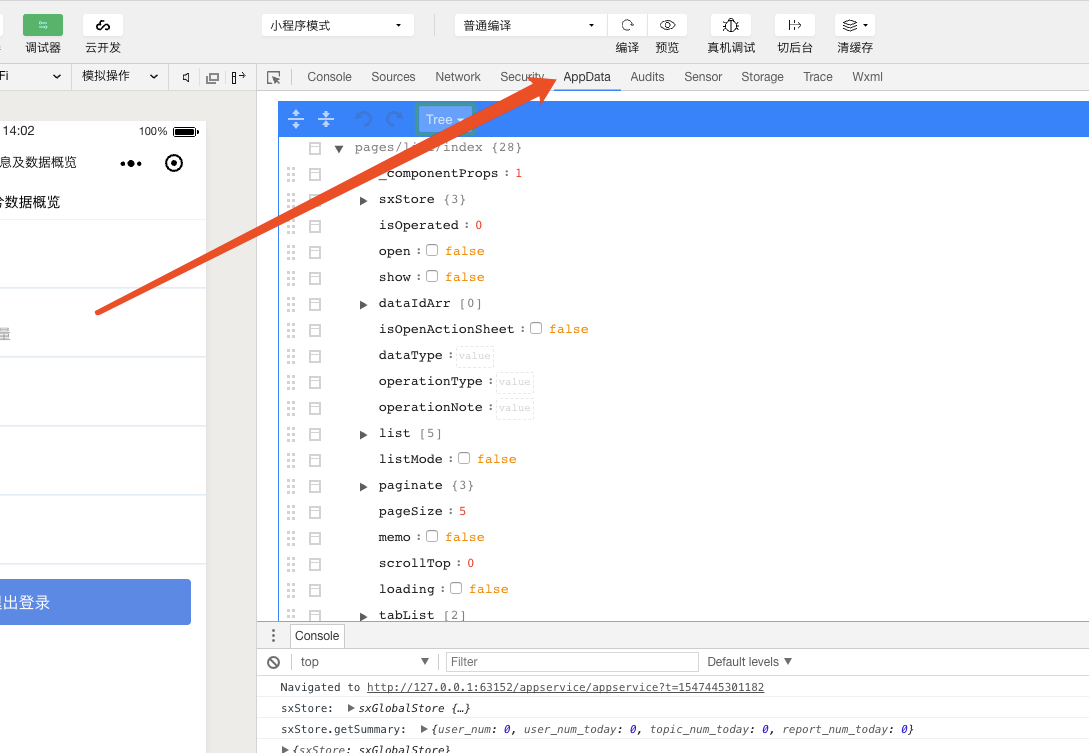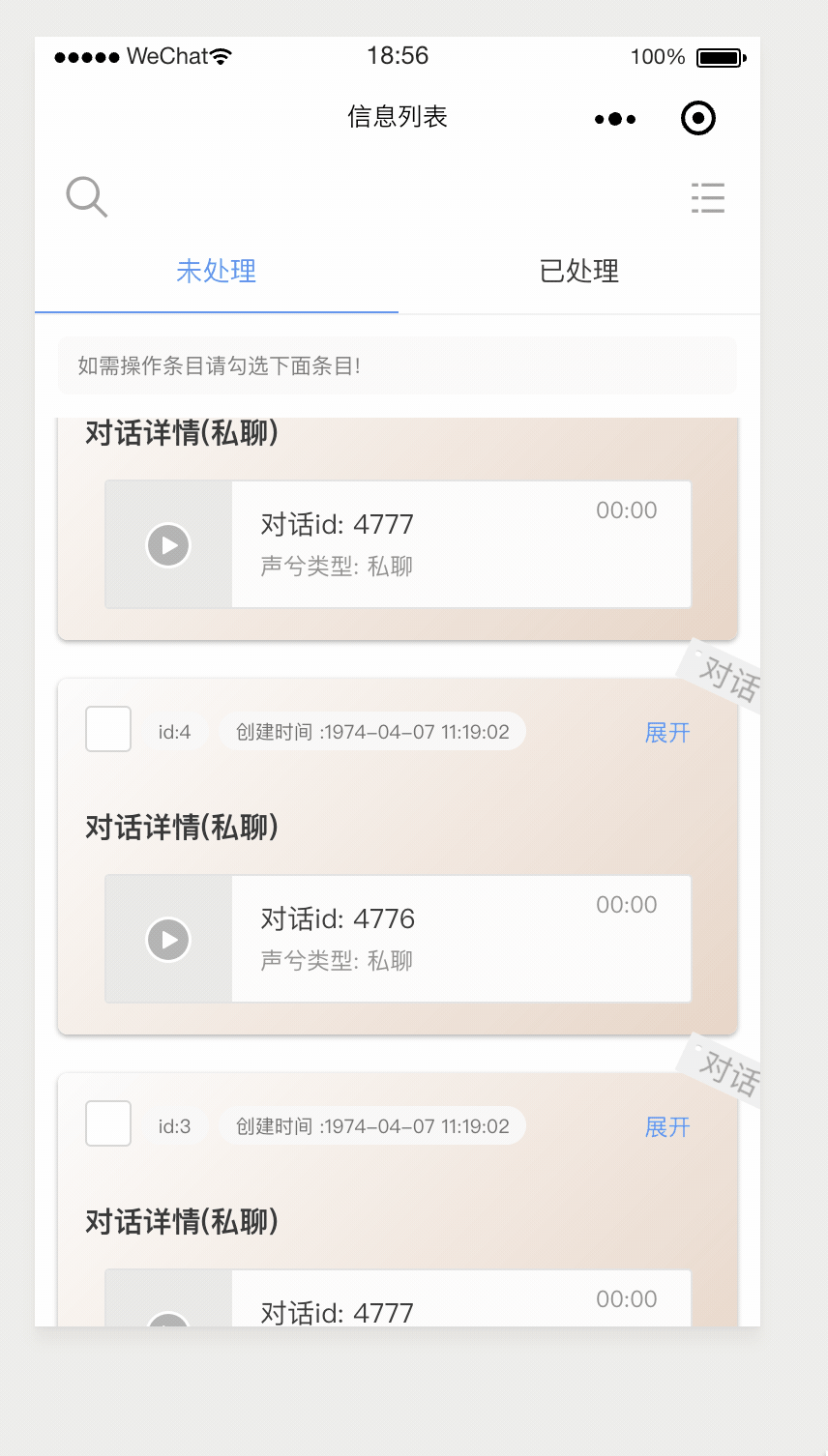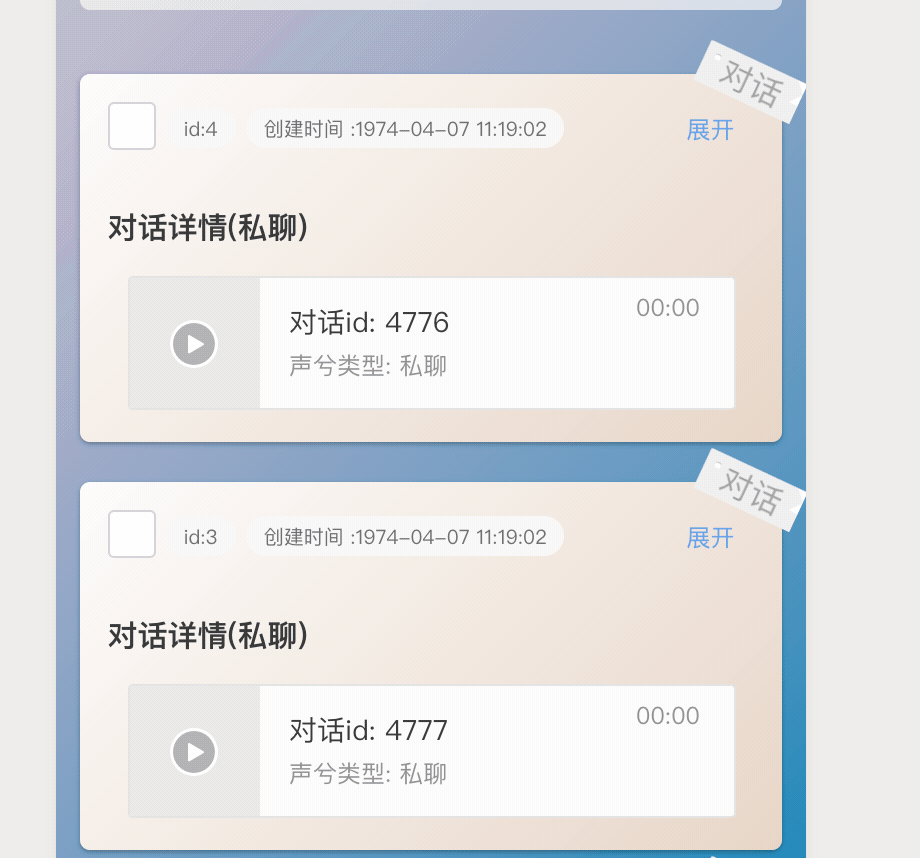前言
在Taro 0.x的时候就写过一个小玩意,虽然没什么人玩. 最近正好看到Taro 1.2.x已经发布了
类React风格的小程序框架,部分地方针对小程序做了妥协.找点东西试试水,看看改进如何了.
刚好公司有个需求做个手机端的举报管理的程序, 开会上揽了过来;
对于这个框架,你除了需要有React的基本功外, 还需要这两方面的知识;
- 小程序自家的文档:
Taro的大部分组件都是基于官方API封装的 - Taro官方文档:: 特别这几篇>> 开发前注意/特殊问题处理/最佳实践/
Async await的支持
虽这个项目(仅微信端)不是很大,梳理下还是有挺多东东的,其他废话不多说,直入主题
问题汇总
生命周期及JSX的{}不支持箭头函数
用箭头函数会出现不可控的结果;
最常见的就是报错;
JSX里面仅支持onClick={this.xxxx.bind(this,args)这种写法- 生命周期用了会导致,
store亦或者render的结果异常(比如执行顺序和值的错误) - 至于其他常规函数则支持箭头函数的写法
动态样式
虽说Taro官方支持CSS Module,若是你考虑多平台的话..还是建议用常规的命名规划来维护好一些
至于className的动态css class处理..我倾向于使用classnames这个库
classname: 最普通的用法如下
// 在Taro的用法跟在React的用法差不多..Taro上需要放在{} ,不然会直接报错(就是= classnames对象这种写法)import classnames from 'classnames'
<View className={classnames({
"tab-operator": true,
"show": userIdList.length>0,
"hide": userIdList.length === 0
})}>
<View className="tab-content-top-counter">
<View className="left-text">{userIdList.length === 0 ?'如需操作条目请勾选下面条目!':选中了${userIdList.length}条}</View>
{userIdList.length === 0 ? null : <View className="unselect" onClick={this.unselect.bind(this)}>取消</View>}</View>
复制代码
自己封装的组件提示类型缺失的(TS)
比如你封装的组件里面依赖了Taro封装的一些组件,这时候暴露这个组件,
就会缺失你自己加进去的特性,导致编辑器会提示有错误信息..
最简便的就是用type或者interface,这样就不会报错了.比如下面
//方式一
type staticPropsSearchPanel={
open: boolean,
onClose?: () => void
}// 也可以用interface ,与上面的区别,比较明显的是这个可以继承其他的
// 方式二
interface staticPropsSearchPanel {
open: boolean,
onClose?: () => void
}class SearchPanel extends Component<staticPropsSearchPanel>{}
复制代码
组件支持程度
- 不支持函数式组件:具体看官方说法 截止
1.2.x依旧不支持,只能写成class xx extends Component这种 - 不支持同个文件内直接多个
class xx extends且被引用
允许几种状态管理器的接入?
dva,mobx,redux 都有对应taro接入方案,后两者是taro官方维护
是否支持alias
最新版是支持的(可用),在config目录暴露了配置文件,当然很多其他webpack的配置也有一些直接暴露

至于eslint不识别alias符号的,这个暂时无解,我试过社区的一些方案,好像没啥用!
路由跳转注意点
- 中划线的坑 跳转的路由不支持中划线(目前),以后未知
开发模式和真机调试可以正常编译,打包上传就不能识别了...浪费我很多时间..
- 路径的坑
跳转的url必须全路径!!!!!,比如
// 重定向,会提供返回按钮 Taro.redirectTo({ url: '/pages/list/index' })// 重载整个程序,关闭其他所有页面(清除堆栈的页面),然后打开你指定的页面
// 这个非常适合鉴权失败或者过期的时候.只打开注册页面
Taro.reLaunch({ url:'/pages/login/index'})//还有其他
navigate这些,基本都是微信文档写到的东西,taro封装了下
复制代码
鉴权页面渲染突兀的改善姿势!
若是你在第一个页面做鉴权跳转,很容易就遇到渲染部分再跳转的
给人的视觉反馈不是很好,对于此,写一个中间鉴权页面作为第一页,跳转会改善很多(视觉上)
因为效果可以定制,而不渲染很多没必要的组件
比如我的,我的入口页面就是auth
import './index.less';import { View } from '@tarojs/components';
import Taro, { Component, Config } from '@tarojs/taro';class Auth extends Component {
/**
- 指定config的类型声明为: Taro.Config
- 由于 typescript 对于 object 类型推导只能推出 Key 的基本类型
- 对于像 navigationBarTextStyle: 'black' 这样的推导出的类型是 string
- 提示和声明 navigationBarTextStyle: 'black' | 'white' 类型冲突, 需要显示声明类型
*/
config: Config = {
navigationBarTitleText: 'xx小助手'
}static options = {
addGlobalClass: true
}// 有token就可以进入内容区域,至于token是否有效是在里面去判断的;
// 没有token乖乖去登录
componentDidShow() {
const token = Taro.getStorageSync('token');
if (!!token) {
Taro.redirectTo({ url: '/pages/list/index' })
return
}
Taro.redirectTo({ url: '/pages/login/index' })}
render() {
return (
<View className='auth-page'>loading....</View>
)
}
}
export default Auth
复制代码
componentDidShow的注意点
previewImage(图片的点击全屏预览),在关掉后会再次触发该生命周期..
所以把请求放这里的需要自己权衡下..比如我的列表展开后,点击图片关闭后导致列表重刷;
挪到了componentWillMount就不会受previewImage的影响
mobx的接入及数据观察?
mobx的接入和常规的接入差不多,用法基本也一致..
就是从mobx-react变成@tarojsw/mobx,由taro封装来提供
至于devtools这种.小程序目前只能从开发者工具看到,
虽然没专业的devtools那么清晰,但是总体上可以看到数据的组织和响应,如图

结合mobx在跳转前预请求?
比如详情页,展示类的页面,我们一般都是通过typeId去拿到具体的详情,再来展示
常规做法都是进到页面后在componentDidMount去触发请求,然后把结果集渲染到页面,
但这样一进去就会展示默认数据再替换,有点突兀;我们肯定想改善用户体验,那就把数据预请求
我们可以根据实际场景在跳转之前的生命周期入手,比如redirecTo可以在componentDidHide内调用函数dispatch
reLuanch可以在componentWillUnmount内触发;
跳转过去的页面,可以直接从props拿到渲染,不会那么突兀
时间戳及常见日期格式转换
对于日期的处理,我们最常用的是两种姿势的传递的时候用时间戳,展示的时候用可读性较强的YYYY-MM-DD这种
所以就没必要引入moment这个大库了用的是dayjs,很小功能比较全面的库,api类moment,用过都说好.
- dayjs
当然,你自己用函数封装一个转换也行,就不用引入多一个库了,见仁见智了.
获取结点信息注意点
若是要指定组件自身内的结点,this必须为this.scope</code></p><p>微信小程序官方的<code>this</code>代表实例,在<code>taro</code>中<code>this.scope代表组件自身(实例)
componentDidMount() {
const query = Taro.createSelectorQuery().in(this.$scope);
query.select('#list-card').boundingClientRect((res) => {
console.log('res: ', res);
}).exec()
}
复制代码变动项目基础信息(微信小程序)
直接在开发者工具的选项里面勾选不会保存到项目内,比如基础库的切换;
有效的是直接操作根目录下的project.config.json
// 这份配置的参数可以具体看微信官方给出的解释,会更加全面
// https://developers.weixin.qq.com/miniprogram/dev/devtools/projectconfig.html?search-key=%E9%A1%B9%E7%9B%AE%E9%85%8D%E7%BD%AE{
"miniprogramRoot": "打包输出路径",
"projectname": "项目名称",
"description": "声兮管理后台小程序",
"appid": "xxxx",
"setting": {
"urlCheck": true, // 是否检查安全域名和 TLS 版本
"es6": false, // 是否启用es6转换
"postcss": true, // 启用postcss的支持
"minified": false, // 是否压缩代码
"newFeature": true // 是否启用新特性的支持
},
"compileType": "miniprogram", // 编译类型
"libVersion": "2.5.0", // 基础库版本的指定
"condition": {}
}
复制代码
其他小程序有对应的配置文件,看官方链接
- 项目配置
封装的一些小玩意
请求封装(TS)
request.tsx- 支持路由
prefix header的合并- 响应的拦截
- 支持路由
/*
- @Author: CRPER
- @LastEditors: CRPER
- @Github: https://github.com/crper
- @Motto: 折腾是一种乐趣,求知是一种追求。不懂就学,懂则分享。
- @Description:请求接口封装
*/
import Taro from '@tarojs/taro';
import '@tarojs/async-await';interface options {
header: any,
method?: string,
dataType?: string,
responseType?: string,
success?: Function,
fail?: Function,
complete?:Function
}/**
- @param url : 接口路径
- @param method : 请求方法(RESTFUL,但是没有PATCH,看微信文档支持)
- @param data : 传递的数据
- @param options : 可以覆盖header这些
- @param prefix : 接口额外的前缀
*/
export default async function(url: string, method?:string,data?: string | [any] | Object, options?: options, prefix?: string){// 不支持patch!!!!!微信自家的请求本身就不支持patch!!!
// 微信端自己缓存token
const wxToken:string|void =await Taro.getStorage({ key: 'token' })
.then(res => res.data).catch(err => {
if(err) return
} )// 默认值
const defaultOtions: options = {
method: 'GET',
header:{}
}// 若是存在token则赋予
if (wxToken) {
defaultOtions.header.Authorization = wxToken
}const baseUrl: string = process.env.NODE_ENV === 'development' ? 'https://xxx.com/api/web' : 'https://xxx.com/api/web';
const newUrl = prefix ?${baseUrl}${prefix}${url}:${baseUrl}${url}const requestObject: any = {
url: newUrl,
...defaultOtions,
...options,
method,
data
}const codeMessage: Object = {
200: '服务器成功返回请求的数据。',
201: '新建或修改数据成功。',
202: '一个请求已经进入后台排队(异步任务)。',
204: '删除数据成功。',
400: '发出的请求有错误,服务器没有进行新建或修改数据的操作。',
401: '用户没有权限(令牌、用户名、密码错误)。',
403: '用户得到授权,但是访问是被禁止的。',
404: '发出的请求针对的是不存在的记录,服务器没有进行操作。',
406: '请求的格式不可得。',
410: '请求的资源被永久删除,且不会再得到的。',
412: '访问被拒绝,请重新登录',
422: '当创建一个对象时,发生一个验证错误。',
500: '服务器发生错误,请检查服务器。',
502: '网关错误。',
503: '服务不可用,服务器暂时过载或维护。',
504: '网关超时。',
};// 检测请求状态
const checkStatusAndFilter = (response):Promise<any> | undefined => {
if (response.statusCode >= 200 && response.statusCode < 300) {
if (response.statusCode === 200 || response.statusCode === 304) {
return response.data
}
return response;
}// 除此之外的错所有遍历上面的错误信息抛出异常 const errortext = codeMessage[response.statusCode] || response.errMsg; Taro.showToast({ title: errortext, mask: true, icon: 'none', duration: 2000 }) return Promise.reject(response)};
try {
return await Taro.request(requestObject)
.then(checkStatusAndFilter)
.then(res => {
// 这一块是我和后端协商的,接口内部为1则出错的,为0才有数据回来
if (res.code === 1) {
const errMsg = res.msg ? res.msg : '接口错误了';
Taro.showToast({
title: errMsg,
mask: true,
icon: 'none',
duration: 2000
})
Promise.reject(errMsg)
}
if (res.code === 0) {
if (res.data) {
return res.data
}
return null
}
return res
}).catch(errRes => {
if (errRes.statusCode === 412) {
Taro.reLaunch({ url:'/pages/login/index'})
}
})
} catch (err) {
Taro.showToast({
title: '代码执行异常',
mask: true,
icon: 'none',
duration: 2000
})
}
}
复制代码
- 用法
// 我配置了alias
import wxfetch from '@utils/request';// 比如我代码中的其中一个请求,处理行为
// 切割列表数据
spliceList = (dataIdArr: Array<string | number> = []) => {
const {list, paginate: {total}} = this.state;
// 若是只有一条,干掉后尝试请求列表判断是否还有新的数据
if (list.length <= 1) {
this.getList()
}
let tempArr: Array<Object> = list.filter((item) => {
for (let i = 0; i < dataIdArr.length; i++) {
let innerItemId = Number(dataIdArr[i]);
if (item.id !== innerItemId) {
return item
}
}
})
this.setState({
list: tempArr,
paginate: {
total: total - dataIdArr.length
},
dataIdArr: []
})
}// 处理行为
handleActionSheetClick = async (e: number): Promise<any> => {
try {
const actionParam = {operationType: e};
const {dataIdArr, operationNote} = this.state;
const isActionNoValid: boolean = !e || e === 0 || (Array.isArray(dataIdArr) && dataIdArr.length === 0);if (isActionNoValid) { Taro.atMessage({ 'message': '请再次您的行为是否正常,比如勾选数据!', 'type': 'error', 'duration': 1000 }) return false; } await wxfetch('/suspiciousDatas', 'POST', { dataIdArr, operationNote, ...actionParam }); // 切割数组且关闭遮罩层 this.spliceList(dataIdArr); this.handleActionSheetClose(); } catch (err) { console.log(err); }}
复制代码
简化版的节流器(TS)
throttle.tsx
/*
- @Author: CRPER
- @LastEditors: CRPER
- @Github: https://github.com/crper
- @Motto: 折腾是一种乐趣,求知是一种追求。不懂就学,懂则分享。
- @Description: 简易版的节流函数
*//**
- @param fn : 回调函数
- @param threshold : 时间,单位毫秒
*/
export default function throttle(fn: Function, threshold: number = 1500) {
if (threshold === null) {
threshold = 1500
}
let _lastExecTime: null | number = null;
let context = this
return function (...args: any[]): void {
let _nowTime: number = new Date().getTime();
if (_nowTime - Number(_lastExecTime) > threshold || !_lastExecTime) {
fn.apply(context, args);
_lastExecTime = _nowTime
}
}
}
复制代码
- 用法
在this.xxx.bind的基础上
import throttle from '@utils/throttle';// 滚动到顶部触发
onScrolltoupper = throttle(() => {
console.log('1111');
},3000)
复制代码
下拉刷新显示内置的loading.

就是微信自家的三个小点, 这个需要配置下页面的一些自有属性.
Taro只要引入Config,即可在组件内声明页面属性
import Taro, { Component, Config } from '@tarojs/taro';
class ReportList extends Component {/**
- 指定config的类型声明为: Taro.Config
- 由于 typescript 对于 object 类型推导只能推出 Key 的基本类型
- 对于像 navigationBarTextStyle: 'black' 这样的推导出的类型是 string
- 提示和声明 navigationBarTextStyle: 'black' | 'white' 类型冲突, 需要显示声明类型
*/
config: Config = {
navigationBarTitleText: '可疑数据汇总',
enablePullDownRefresh: true, // 这个是启用下拉刷新特性
backgroundTextStyle: "dark", // 把显示的文本颜色改成暗色调,亮色的话.你背景不改看不到,因为同色
backgroundColor:'#f7f7f7' // 页面的背景色
}}
// 启用后,记得加对应的条件关闭,不然会一直显示
// 下拉刷新
onPullDownRefresh = () :void => {
// 这个loading是 导航栏,页面标题那块显示一个loading , 微信内置的
Taro.showLoading({
title: 'loading....'
})// 因为我的接口请求都是 async await的姿势,所以可以队列执行 this.getList(); this.unselect(); // 接口请求完毕后隐藏两个loading , 标题和下拉区域 Taro.hideLoading(); Taro.stopPullDownRefresh();}
复制代码
实现组件样式过渡?
实现一个组件过渡可以一定程度上增强体验,本质就是CSS3来写过渡,
比如看我这边实现的一个效果,自己感觉还看得过去

- 样式
//若是要产生视觉效应,那元素有偏移才能看出来,所以一般被作用的元素都不会在默认位置
// 这个项目用了less ,主要过渡.testdiv{
opacity: 0;
transform: translateY(100vh) rotate(270deg) scale(0.5);
&.fadeIn{
opacity: 1;
transform: translateY(0) rotate(0deg);
transition:all 0.3s ease-in-out;
}
&.fadeOut{
opacity: 0;
transform: rotate(-270deg) scale(0.2) translateX(-100vw);
transition:all 0.3s ease-in-out;
}}
复制代码
- 作用区域
这边用了classnames来动态追加class
<View className={classnames({ "search-panel": true, 'fadeIn': open, 'fadeOut': !open})} >
</View>
复制代码节点元素高度的过渡(CSS3)
就是让展开和收起有个过渡效果,
经过N多次的尝试(不能给元素设置height!!), 把元素初始化的高度设置max-height:0,
其他过渡设置合适的max-height即可解决

Taro里面对事件的支持
有些文档没说到,只能去翻源码...看common.d.ts一目了然,比如长按事件这些
github.com/NervJS/taro…
css3 loading 引入

其实跟在普通开发模式上写法差不,基本还是CSS3的功能,DIV换成能识别的节点而已..比如Taro
// 样式部分.no-data-text {
background-color: rgba(233, 228, 228, 0.726);
color: #333;
height: 100vh;
width: 100%;
display: flex;
justify-content: center;
align-items: center;
flex-direction: column;
font-size: 50px;
font-weight: 700;
.loading-text{
font-size:28px;
color:#555;
}
}.spinner {
width: 200px;
height: 70px;
text-align: center;
font-size: 10px;
}.spinner .rect {
background-color: rgb(123, 176, 225);
height: 100%;
width: 10px;
margin:0 5px;
display: inline-block;-webkit-animation: stretchdelay 1.2s infinite ease-in-out;
animation: stretchdelay 1.2s infinite ease-in-out;
}.spinner .rect2 {
-webkit-animation-delay: -1.1s;
animation-delay: -1.1s;
}.spinner .rect3 {
-webkit-animation-delay: -1.0s;
animation-delay: -1.0s;
}.spinner .rect4 {
-webkit-animation-delay: -0.9s;
animation-delay: -0.9s;
}.spinner .rect5 {
-webkit-animation-delay: -0.8s;
animation-delay: -0.8s;
}@-webkit-keyframes stretchdelay {
0%, 40%, 100% { -webkit-transform: scaleY(0.4) }
20% { -webkit-transform: scaleY(1.0) }
}@keyframes stretchdelay {
0%, 40%, 100% {
transform: scaleY(0.4);
-webkit-transform: scaleY(0.4);
} 20% {
transform: scaleY(1.0);
-webkit-transform: scaleY(1.0);
}
}
复制代码
<!--节点部分-->
<View className="no-data-text">
<View className="spinner">
<View className="rect rect1"></View>
<View className="rect rect2"></View>
<View className="rect rect3"></View>
<View className="rect rect4"></View>
<View className="rect rect5"></View>
</View>
<View className="loading-text">正在加载中......</View>
</View>
复制代码总结
截止该文章输出的时候,Taro的版本
? Taro v1.2.7Taro CLI 1.2.7 environment info:
System:
OS: macOS 10.14.2
Shell: 5.3 - /bin/zsh
Binaries:
Node: 10.14.2 - /usr/local/bin/node
Yarn: 1.13.0 - /usr/local/bin/yarn
npm: 6.5.0 - /usr/local/bin/npm
npmPackages:
@tarojs/async-await: 1.2.7 => 1.2.7
@tarojs/components: 1.2.7 => 1.2.7
@tarojs/mobx: 1.2.7 => 1.2.7
@tarojs/mobx-h5: 1.2.7 => 1.2.7
@tarojs/mobx-rn: 1.2.7 => 1.2.7
@tarojs/plugin-babel: 1.2.7 => 1.2.7
@tarojs/plugin-csso: 1.2.7 => 1.2.7
@tarojs/plugin-less: 1.2.7 => 1.2.7
@tarojs/plugin-sass: 1.2.7 => 1.2.7
@tarojs/plugin-uglifyjs: 1.2.7 => 1.2.7
@tarojs/rn-runner: 1.2.7 => 1.2.7
@tarojs/router: 1.2.7 => 1.2.7
@tarojs/taro: 1.2.7 => 1.2.7
@tarojs/taro-alipay: 1.2.7 => 1.2.7
@tarojs/taro-h5: 1.2.7 => 1.2.7
@tarojs/taro-swan: 1.2.7 => 1.2.7
@tarojs/taro-tt: 1.2.7 => 1.2.7
@tarojs/taro-weapp: 1.2.7 => 1.2.7
@tarojs/webpack-runner: 1.2.7 => 1.2.7
eslint-config-taro: 1.2.7 => 1.2.7
eslint-plugin-taro: 1.2.7 => 1.2.7
复制代码
Taro和Taro UI目前版本对ts的支持还有待提高,会偶尔碰到缺少types的
若是项目不大,对于想省心的,建议直接撸JS版本;
Taro社区目前还是很活跃的, 照这样的情况下去,再迭代两三个X.Y.Z(Y位)版本应该会好用很多.
ts的好处很明显,编辑器可以直接悬浮显示推断的类型,很多错误可以在开发过程避免了;
水文到此结束,有不对之处请留言,会及时修正,谢谢阅读.